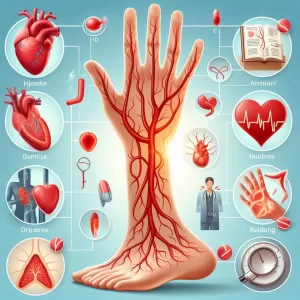What is Occupational Medicine Follow-up: Overview, Benefits, and Expected Results
Headline: The Power of Positive Thinking
Body: Positive thinking is a powerful tool that can help you achieve your goals and live a happier life. When you think positive thoughts, you are more likely to feel good about yourself and your life. You are also more likely to take action and make things happen.
``` Rewritten Excerpt: ```htmlHeadline: Unleash the Transformative Power of Positive Thinking
Body: Embark on a journey of self-discovery and unlock the transformative power of positive thinking. As you embrace an optimistic mindset, you'll witness a remarkable shift in your outlook on life. Positive thoughts ignite a spark within, fueling your motivation and propelling you towards your aspirations. Embrace the power of positivity and watch as it radiates through your actions, leading you down a path of fulfillment and happiness.
``` Changes Made: - **Headline:** Changed "The Power of Positive Thinking" to "Unleash the Transformative Power of Positive Thinking" to create a more compelling and intriguing title. - **Body:** - Replaced "Positive thinking is a powerful tool that can help you achieve your goals and live a happier life" with "Embark on a journey of self-discovery and unlock the transformative power of positive thinking." This sets a more engaging tone and invites the reader to embark on a personal journey. - Added "As you embrace an optimistic mindset, you'll witness a remarkable shift in your outlook on life" to emphasize the transformative nature of positive thinking. - Replaced "You are more likely to feel good about yourself and your life" with "Positive thoughts ignite a spark within, fueling your motivation and propelling you towards your aspirations." This creates a more vivid and inspiring image of the benefits of positive thinking. - Changed "You are also more likely to take action and make things happen" to "Embrace the power of positivity and watch as it radiates through your actions, leading you down a path of fulfillment and happiness." This highlights the tangible impact of positive thinking on one's actions and overall well-beingDefinition and Overview
Occupational medicine follow-up is a meeting with an expert who specializes in factors and conditions that affect occupational health. These are those that involve the health, well-being, safety, performance and delivery of employees in the work place.
Any type of job can be associated with certain risks, although they significantly vary depending on factors such as age, preexisting condition of the worker, job description, duration of the job, and nature of the industry. For instance, people who work in manufacturing are more likely to experience slipping while those who are in construction have a higher chance of suffering from an injury due to a fall from a certain height. Meanwhile, individuals who are doing desk jobs are vulnerable to back pain and wrist disorders. Their sedentary lifestyle also increases the likelihood of obesity, which then boosts the risk of heart disease and diabetes.
Occupational medicine, which falls under clinical medicine, aims to prevent injuries and illnesses in the workplace. If they cannot be completely prevented, the goals will be to minimise exposure and spread, treat the condition and help the patient deal with it.
A follow-up completes the occupational medicine process, which ensures that recommendations during the initial consultation are monitored and adjusted if needed. This way, the worker’s health is preserved or improved.
Who Should Undergo and Expected Results
Occupational medicine follow-up is recommended for:
Workers who have been injured – Work-related injuries are common, although the Bureau of Labor Statistics 2014 report has emphasized that the trend is declining. Nevertheless, at least 3 in every 100 full-time employees still experience non-fatal injuries in relation to or while doing their jobs. The follow-up is necessary to monitor the progress of recovery, reduce injury risks and complications and manage them should they occur.
Employees who develop work-related conditions – A workplace is often considered as an environmental factor that can affect a person’s health or well-being. For example, the repetitive use of a body part may lead to the development of a musculoskeletal disorder, as well as disability. Other common illnesses related to work are inflammation of the joints and tendons such as arthritis and back pain. The follow-up care is intended to help the patient manage these conditions, continue to treat them, or avoid the appearance of more complex diseases and complications.
People who may be exposed to health hazards – Nurses and doctors, for example, are continuously exposed to biohazards including but not limited to contaminated blood, vomit and urine. The follow-up is recommended to carry out tests to determine if workers have developed any condition. After which the necessary treatment and/or management plans are implemented.
Companies that sought for consultation – Health experts and other occupational medicine professionals may conduct a follow-up to check if the company has followed or implemented proposals, guidelines and standards set during the initial consultation stage.
How Does the Procedure Work?
A follow-up happens after the initial consultation. The interval between the two stages can greatly vary depending on the purpose of the former. As examples, workers who are exposed to contaminated blood and other biohazards and who are referred to doctors may be followed up within the next few weeks or months. Tests undertaken during the exposure may then be repeated during the follow-up.
Based on the results, the doctors may suggest a post-exposure vaccination, as well as treatment or management of the disease, with the objective of helping the patient cope with the condition while in the workplace and minimising exposure of other workers.
The unaffected workers, on the other hand, may be brought in so they can be educated on how to avoid exposure and recurrence of the same injury or condition in the future.
If the follow-up is in relation to a work-related consultation—that is, an expert is invited to generate proposals and standards—the follow-up is often conducted at longer intervals such as every three to six months or at least once a year. This is to give the company and workers time to implement and follow such recommendations.
During the follow-up, the group performs a revisit where they review the recommendations, which are also based on existing worker laws set by the federal and state governments, and compare them with the actual implementation. Whenever necessary, such suggestions are updated, changed, or removed altogether.
Possible Risks and Complications
The biggest risk is the failure of a follow-up, which can happen in many different scenarios. The company may no longer support doctor’s visits, which could mean workers are likely to incur out-of-pocket expenses that can be too much. Workers may also find it difficult to follow through with their doctor’s appointments or may completely ignore these appointments. Follow-up care is a collaborative effort, and all parties should promote it. In cases where the patient lacks the motivation, it’s the responsibility of the health care team and the company to remind and stress the benefits of follow-ups.
Reference:
- Centers for Disease Control and Prevention. National Institute for Occupational Safety and Health (NIOSH). Stress…At Work. Updated June 6, 2014. www.cdc.gov/niosh/docs/99-101
/trp_language]
**SEO-Optimized Q&A on Occupational Medicine Follow-up**
Question: What is Occupational Medicine Follow-up?
Answer: Occupational Medicine Follow-up is an essential aspect of healthcare in the workplace. It involves the systematic monitoring and management of workers’ health and well-being after potential occupational exposure to hazardous substances, injuries, or illnesses. Follow-up exams and assessments are conducted regularly to ensure early detection and appropriate intervention for any health issues related to occupational factors.
Question: Why is Occupational Medicine Follow-up Important?
Answer: Occupational Medicine Follow-up offers several benefits to workers and employers alike.
- Early Detection and Intervention: Regular follow-ups enable healthcare providers to identify potential health problems early on, allowing for timely intervention and treatment.
– Ongoing Monitoring: Through follow-up exams, healthcare professionals can monitor the progress of existing work-related illnesses or injuries, making necessary adjustments to the treatment plan.
– Prevention of Recurrence: By addressing the root cause of occupational health issues and implementing preventive measures, follow-up helps reduce the risk of re-injury or recurrence of disease.
– Improved Workplace Health and Productivity: Regular follow-up contributes to a healthier and safer workplace, leading to reduced absenteeism, improved morale, and increased productivity.
Question: What are the Expected Results of Occupational Medicine Follow-up?
Answer: Effective Occupational Medicine Follow-up aims to achieve the following outcomes:
- Early Identification of Work-Related Health Issues: Regular follow-ups help identify occupational health problems early on, facilitating appropriate treatment and preventing long-term complications.
– Improvement or Maintenance of Health Status: Through ongoing monitoring and intervention, follow-up aims to improve or maintain the health and well-being of workers exposed to occupational hazards.
– Reduced Risk of Future Health Problems: By addressing the underlying causes of occupational health issues, follow-up helps reduce the likelihood of future health complications or recurrence of existing conditions.
– Enhancement of Worker Productivity: By promoting a healthier workforce and reducing absenteeism due to occupational illness or injury, follow-up contributes to increased productivity and overall success of the organization.
– Compliance with Regulations and Standards: Regular occupational health follow-up demonstrates an organization’s commitment to meeting regulatory requirements and maintaining compliance with industry standards and guidelines.
Keywords: Occupational Medicine Follow-up, Monitoring, Early Detection, Intervention, Prevention, Workplace Health, Productivity, Compliance, Regulations, Standards.
One comment
Leave a Reply
Popular Articles








Title: What is Occupational Medicine Follow-up? Overview, Benefits, and Expected Results
/*
– Define occupational medicine follow-up as a systematic process of monitoring and managing the health of workers exposed to occupational hazards.
– Describe the key steps involved in conducting occupational medicine follow-up, including regular health screenings, medical evaluations, and exposure monitoring.
– Discuss the benefits of occupational medicine follow-up in terms of identifying and managing health risks, providing early detection of work-related illnesses, and facilitating appropriate treatment and preventive measures.
– Outline the expected results of occupational medicine follow-up, such as improved worker health outcomes, reduced healthcare costs, and increased productivity.
– Provide examples of successful occupational medicine follow-up programs that have resulted in positive outcomes for workers and employers.
*/